Tableau d'honneur
Popular Content
Showing content with the highest reputation on 12/30/22 dans Messages
-
Salut à tous ! Je suis très étonné de ne pas voir davantage d'avis sur cette sortie, c'est pourtant vraiment super sympa ! Je vous fais un petit retour rapide de ces 3 effets A double tour de Gabriel Verlaine Werlen Alors donc, il s'agit d'un petit livre (50 pages) contenant 3 effets de mentalisme. Tous les effets ne se valent pas à mon sens. Mais c'est vendu à un tout petit prix, très abordable, bien conçu et finalement plutôt varié même s'il n'y a que 3 effets. Effet #01 Absolute Free Will Vendu plus ou moins comme l'effet majeur de ce livret, c'est pourtant celui qui m'a le moins plu. Il s'agit d'une prédiction de choix du spectateur 100% libres. L'histoire est belle, la présentation (boniment) est impeccable, comme toujours avec Gabriel, et le choix est réellement libre. C'est plutôt la méthode qui ne me parle pas vraiment : Je sais qu'en mentalisme, il faut bien driver son spectateur mais là ça me parait un peu trop "osé". Et contrairement aux deux autres effets, on ne finit pas clean. Effet #02 Feux follets Alors là, je dis : "Oui, mille fois oui !" J'ai beaucoup aimé cet effet ! Le mentaliste a un certain nombre d'allumettes dans la main et c'est le spectateur qui va deviner le nombre d'allumettes. La force réside bien évidemment dans la présentation, Gabriel nous fournit les textes adaptés à chaque situation et c'est une merveille d'ingéniosité. Au delà des brillantes idées qui rendent crédible cet effet, je trouve qu'il s'en dégage quelque chose de vraiment magique voire surnaturel ! Petit coup de cœur pour cet effet vraiment bien travaillé. Effet #03 Pile je gagne, Face tu perds ! Alors oui, il y a 3 effets pour un livret qui ne prétend en vendre que 2. C'est peut-être pour garder le jeu de mots "A double tour" ou parce que ce troisième effet a déjà été publié (dans Iceberg) qu'il n'est considéré que comme un bonus. Mais pourtant il s'agit d'un effet à part entière, et même mieux que le premier effet à mes yeux. Dans cet effet, le mentaliste écrit secrètement et réellement soit "Pile" soit "Face" sur une feuille. Pas de double lecture, pas de double sortie, pas de feinte de quelque sorte que ce soit avec cette prédiction. On a vraiment une prédiction unique et honnête. On jette une pièce imaginaire - et c'est ça ce qui me séduit le plus, comme avec un jeu de cartes imaginaire - et le spectateur va deviner tout seul le résultat : Pile ou Face. Un fois de plus, le texte est sacrément bien pensé, c'est du grand art ! Ce n'est pour moi pas aussi puissant que Feux follets mais ça reste dans la même veine. Les + 3 effets de mentalisme de qualité Un tout petit prix : autour de 25 euros Qualité du livret irréprochable Les textes de Gabriel Werlen sont une pure merveille ! Facile à apprendre ! (Mais pas forcément facile à présenter, voire les points négatifs.) Les - On ne peut pas faire 2 fois l'un de ces effets dans la même soirée. On n'a qu'une cartouche. Demande une bonne gestion de notre victime spectateur. Demande pas mal de travail pour ne pas se louper, c'est plus facile de se rattraper avec un jeu de cartes, là on n'a pas de filet. Enfin si, on a des filets mais il faut les travailler. Bilan C'est une très belle découverte et un format qui me plait beaucoup avec ce petit livret facile d'accès et rapide à lire. J'ai nettement préféré "A double tour" plutôt que "Héritage" qui m'a moins parlé. Les techniques et routines présentes dans ce petit livret peuvent offrir un très bon complément à une prestation quelle qu'elle soit : cartes, mentalisme, balles mousse ou autre... Ou carrément nous offrir des outils plutôt impromptus et sympas pour être force de proposition en soirée même quand on est venu à poil ! J'entends par là "sans jeu de cartes et sans matériel de magie" bande de petits cochons va ! Chaque routine nous offre ces 2 aspects : Une idée ingénieuse. Un texte puissant qui permet de porter cette idée ingénieuse. Et c'est là l'une des grandes qualité de Gabriel, avoir des idées brillantes et savoir les mettre en scène. Pour moi c'est adopté, avec un petit coup de cœur pour Feux follets [vmprod p=909]6 points
-
Bonjour à toutes et tous Voici un petit CR vidéo de l’into wallet en espérant qu’il puisse vous aider à vous faire une idée sur ce portefeuille.5 points
-
On peut imaginer que l’I.A. est calibrée sur l’intelligence humaine…3 points
-
Salut ! Avec tu as 2 vidéos en anglais. Mais peut-être que certaines boutiques ont tourné des vidéos en français ? Quoi qu'il en soit, la première de 33 min présente le matériel format poker et comment l'intégrer à un jeu de cartes ou un carnet. Tu as une démonstration du peek sous une vingtaine de feuilles mais ce n'est pas une vidéo de "performance réelle". La deuxième de 15 min réadapte la première mais au format carnet uniquement (un peu plus long et large). Plusieurs méthodes de reset sont présentées, en plus de celui fourni mais nécessiteront un peu de matériel en plus (rien de bien méchant).3 points
-
Je me suis mis à la séparation de cartes. En fait, je faisais la même erreur que beaucoup : utiliser d'anciennes cartes. Dès que j'ai sacrifié un jeu neuf, au bout d'une dizaine de cartes j'ai compris le mouvement et je peux séparer une carte en deux sans problème. Ma question porte sur l'épaisseur des cartes reconstituées. Selon tout ce que j'ai pu lire et regarder en vidéo, à chaque fois que l'on sépare une carte (qui a au départ 3 couches) il faut faire en sorte d'obtenir une partie plus épaisse (qui contient deux couches) et une partie moins épaisse (qui ne contient qu'une couche). On ne conserve que la partie la plus épaisse qui n'a pas trop souffert de la manœuvre. La partie plus fine est, elle, plus abîmée. Par conséquent, si on a besoin du dos, il faudra faire en sorte que le dos soit sur la partie épaisse et la face sur la partie fine. Et si on a besoin de la face, il faudra faire en sorte que la face soit sur la partie épaisse et le dos sur la partie fine. Si on recompose une carte (par exemple pour faire une DF ou une DD), la carte sera toujours un peu plus épaisse qu'une carte ordinaire (car composée de 2 fois 2 couches + la colle au lieu de simplement 3 couches) Ais-je bien compris ? Est-ce exact ? Merci.2 points
-
2 points
-
Il a bien raison le Barrau. Avant d'essayer d'inventer l'intelligence artificielle, ce serait bien de commencer par inventer l'intelligence humaine. En tout cas le ChatGPT c'est niveau système expert des années 802 points
-
2 points
-
Comme promis pour nous mettre en appétit, cette bande annonce ! A dimanche soir Les Mandrakes d'Or : #RudyCoby #HollieEngland #RaymondCrowe #KevinMicoud #FabienOlicard #MagMarin #EnnioMarchetto #Vincent.C ! Et les maitres des cérémonies #CharlotteBermond et #MaximeGuény ! Et un coucou amical au boss #GillesArthur !2 points
-
2 points
-
J'ai découvert la semaine dernière un excellent blog, que vous pouvez aller visiter ici. Des réflexions à contre-courant sur la magie et les magiciens, par un magicien. Un autre regard, des ouvertures, des provocations, des remises en question, d'excellentes idées de présentation. Bref, du bonheur chaque jour. Désolé pour ceux qui ne parlent pas anglais (ça va râler, mais je partage quand même). Voici trois exemples d'articles que j'aime beaucoup: _____________________ Le spectateur coupe sur les as: 3 présentations (j'adore la version 3 ) Spectator Cuts to the Aces is definitely in my top 10 most performed tricks. I use John Bannon's Directed Verdict (or one of the variations) which is pretty much perfect. I almost always let the spectator shuffle first by holding out the aces and then palming them in. Actually, that's a lie. I don't "hold out" the aces and "palm them in." But there isn't really nomenclature that exists for a lot of the methods used in informal magic. The truth is the aces are in my hoodie pocket or behind a pillow on the couch, and then I just put them on the deck when they're not looking. Version 1 - The No Patter Version Spectator Cuts to the Aces is one of those tricks that magicians haven't really found a way to mess up with bad patter. It's a pretty pure trick, and I'm happy to present it that way. I'm not always advocating for a deep, world-building presentation. I just think those are the most fun to perform, interesting for the spectator, and they stay with them the longest. But remember that part of my patter algorithm I talked about earlier in the week is that if the patter isn't strong enough to stand on its own, then I dump it. So I'm not against a bare bones presentation, they just don't have the same long-lasting impact and are more for transient enjoyment. And that's fine, in fact it's a good thing for the non-pro performer to not always hit the same notes in a performance. Look, sometimes you want a long slow seduction that lasts half the night, sometimes you want to flip her skirt up and bend her over the kitchen table, and sometimes you just want to make-out on the couch in your underpants. The reason your love-life is so stale isn't because you're a terrible fuck. You've just been in a tired routine, possibly for years. Change things up. Okay, the truth comes out, this isn't a magic blog. Your wife hired me to get this message to you, and this was the only way I could think to approach you with your guard down. Where was I? Yes, mix your style up. The truth is, even when I perform with "no" patter, there is kind of a meta-patter going on. I'm about to give you a gift and give you the line I often lead into these performances with. I'm not exaggerating when I say it's a gift. It's a line that will have your spectator significantly more engrossed in what you perform. But I only use it on someone who has seen me perform something grander and more involved sometime previously. I don't say, "Want to see a trick?" I say, "Can I get your opinion on something I'm working on?" or "I've got something new I'm trying to work the kinks out of. Can I show you? I think you'd be perfect for this." Or any similar words that express: 1. This is a work in progress. 2. I specifically want to perform this for you. We seriously undervalue the inherent interest in giving people a behind the scenes look at this type of work. If someone has seen you perform something that blew their mind in the past, I guarantee you that they are so primed to see "something you're working on." What often prevents people from going down this route is -- as I've mentioned all week -- that it conflicts with their need to be seen as real. "I can't ask someone to see a 'rough draft' because that would imply I'm not really psychic." Okay. Keep shooting yourself in the foot. I don't want to come off as in love with my ideas if they're really not that great, but I truly believe there is magic in this line. It flips a switch in people. It's intriguing, flattering, and best of all, it's true. All our effects are works in progress, and you should want to perform it for that specific person (or else why bother?) and value any opinions and insights they can give. If it's still not clear why this is powerful, imagine this scenario... You go to your friend's house and he says, "Do you want to see the windmill photos I took that they're going to display at the coffee shop?" You say, "Sure." Now, unless you have some particular interest in windmills, you're going to flip through those things quick as shit so you can get on with your night. But if he says, "I'm really glad you're here. I was hoping I could get your thoughts on which of these windmill photos I should give to the coffee shop to display." You still have no interest in windmills or photography but now you're giving each one a good look, comparing composition, really getting into it. All that has changed is your friend went from showing you something to making you a part, however small, of the process. That makes people feel valued. And that stays with them. Version 2 - The Ocean's Eleven Version Spectator Cuts to the Aces isn't really a gambling trick, but I sometimes make it one. Gambling tricks are notoriously bad as far as presentation goes. They're either just demonstrations of skill, or they're these passive, dull stories about some old poker game you were supposedly in. I'm going to give you a generic gambling presentation that you can use for most gambling routines. It's really just a set of rules I apply to the way I present gambling tricks. I make it active. (As in it takes place in the present tense. I'm not repeating some story about a game that didn't happen.) I make it urgent. It's not a demonstration or a trick. It's a rehearsal. So for Spectator Cuts the Aces... You [acting all coked up]: Oh, dude, I'm so glad you're here. I need your help with something. Take a seat. Mix these up. Wait, wait. Not there. That's where the Brazilian will be sitting. I need you to sit here. Okay cool. Now I need to try something. Cut a small portion of cards off the deck. Actually... wait... put that back. He's left-handed. So I need you to do it with your left hand. Great. Okay, now another. And another. And one last one. Let's see what we've got. [You turn over a 4 of hearts, 8 of hearts, King of clubs, and 7 of diamonds.] Fuck! Fuck, fuck, fuck, fuck, fuck, fuck, fuck, fuck. What the hell happened here? Goddammit. I just can't.... Hold on. [You go in the other room and can be heard making a phone call.] Call it off man, we're done. It's not happening [Pause] Listen dude, I said it's DONE. It's not going to work. So what the fuck are we doing this for? To get ourselves arrested or killed? No, I'm out. Find someone else. [Pause] What do you mean? I just tried it again. [Pause] No. Not one. [Pause] I don't know. You tell me, dude, because I sure as shit don't know. [Pause] No. That won't work. [Pause] Because it won't, that's why. We can't... wait. Wait, wait, wait, wait, wait, wait, wait, wait. Hold up. Is there any way we'll have access to the lighting in the room? [Pause] And Johnny can do that, right? Hold on, I need to try something. [You hang up and go back into the room with your friend.] Look, I'm going to tell you something, but you have to promise not to tell anyone or I'll rip your throat out. I swear to god. We have a big score coming up. Potentially a life-changing one. I got into a poker game this weekend that could set me up real nice for a real long time. I've got a crew together. We were supposed to have another couple months to figure this out, but the sultan's daughter threw a fit and got her wedding moved up and now they're in town this weekend. So we're trying to rush this shit, but it's not working. We have a way to introduce our own jeux_de_cartes into the game, but it's all going to fall apart unless we can get the sultan to cut exactly where we want him to when it comes around to him. I'm killing myself trying to figure this shit out. But I might be onto something. [You lower the lights in the room just slightly.} Here. Cut the cards into four piles again. Here, here, here, and here. Turn over the cards you cut to. [They're all aces.] Oh my god. This is going to work. This is going to work! [You take your friend's face in your hands and kiss him square on the lips.] You can end here, with your friend wondering how the hell he cut to the aces by you adjusting the lighting, but I would take it further. [A couple days later, rent a bright yellow Lamborghini. Drive to your friends house and lay on the horn until he comes outside. Roll down your window.] Hey dude. We did it. We fucking did it. It didn't go exactly as planned but we got that fucking money. Oh, I have something for you. [You unzip your jacket to reach into an inside pocket. It's at this point your friend notices that you shirt is covered in what appears to be blood. You pull out a (fake) Rolex from inside your jacket.] I want you to have this. You keep your mouth shut, okay? [There are specks of blood on the watch. You roll up the window and drive away. Never contact this friend again.] Version 3 - The Creepy Child Version The idea of using an ace cutting routine to cut to something other than the aces is a good one. This presentation uses that idea. Your friend, Lisa comes over to have dinner and watch a movie. On the coffee table is a crayon drawing done by a young child of a jumbled bunch of cars. "What's this?" she asks. "Oh," you say, "My niece came over a couple days ago. She loves to draw. I actually told her all about you. She loved hearing about your cat. Oh wait! Want to see something weird? Look at that picture again. Now look at the cover of today's paper. Doesn't her drawing look way similar to the photo of this accident in the paper? I mean, it's not identical, of course. But it's like the same number of cars and this tree is in the same position. But she drew this three days ago. And that accident just happened yesterday. I mean, I know it's just a coincidence but it still freaked me out a little. Her mom is always telling me she has these visions that come true but her mom is such a flake. She also claimed that her grandmother had these visions as well, but then her grandmother got hit by a bus. So much for seeing the future, right?" "Hey, can I get your opinion on something I'm working on?" You perform the effect. "Wouldn't it be amazing if you cut to the four aces?" You turn over the first card, it's the ace of diamonds. The next card is the ten of diamonds, followed by the four of clubs and the six of hearts. "Well, that needs more work. I think maybe you shuffled too much. Eh, it was worth a shot. Where should we order dinner from? I had chinese last night so I'd rather..." As you talk your eyes fall back onto the cards Lisa cut to and your voice fades off. "No way," you say, getting off the couch. You grab Lisa's hand and pull her with you to the kitchen. Stuck with a magnet to the refrigerator is a child's drawing of the ace of diamonds, the ten of diamonds, the four of clubs, and the six of hearts. You stare at it for a moment. "I thought she just drew it because she knew I like magic and playing cards. I never imagined..." You pull it off the refrigerator and bring it back to the other room to compare it to the actual cards, just to be sure. "This is just so weird..." Later that evening as you're clearing the coffee table to get ready for dinner, you move a magazine and another drawing that was under it falls to the floor. Lisa picks it up. It's a stick figure drawing of a woman riding a man in bed, her head thrown back in ecstasy. In a child's scrawl it says, "Uncle Andy" with an arrow pointing to the man, and "Lisa" with an arrow pointing to the woman. You look at it with Lisa. "Ha, wow... that's just... I mean... I'm sure she didn't know what she was drawing... kids just.... well.... they just have the craziest imaginations... don't they?" you say, as your hand brushes some strands of hair off her forehead and behind her ear. If you can't parlay that into some action, you're hopeless. _____________________ Cadavre exquis “An illusion has three stages. First there is the setup, in which the nature of what might be attempted at is hinted at, or suggested, or explained. The apparatus is seen. volunteers from the audience sometimes participate in preparation. As the trick is being setup, the magician will make use of every possible use of misdirection. The performance is where the magician’s lifetime of practice, and his innate skill as a performer, cojoin to produce the magical display. The third stage is sometimes called the effect, or the prestige, and this is the product of magic. If a rabbit is pulled from a hat, the rabbit, which apparently did not exist before the trick was performed, can be said to be the prestige of that trick.” — Christopher Priest, "The Prestige" This is one of my favorite things I've posted. It's a continuation of last week's post on the Phil Deck, but it's a lot more than that (and you don't necessarily need a Phil Deck to do it. I'll explain a regular deck handling at the end.). It started off as just a way to present a separate effect and I performed it that way a few times. But then it became an effect itself. You'll see. The Setup The idea is pretty simple. You show your friends a deck of cards. On the backs of the cards are a bunch of words: nouns, verbs, and adjectives. You shuffle up the cards as you tell your friends that you're trying to increase your magic creativity for competition you're entering. ("First prize is a date with Melinda, The First Lady of Magic. Ten runners up get a subscription to True Mysteries which is a service that sends you the blueprints for magic effects in the mail once a month. I'm already a subscriber but it would be nice to get it free because it's pretty expensive. And 100 entrants will be randomly picked to be guest editor for a day at thejerx.com, the world's greatest magic blog.") The competition is a test of magical improvisation so you've created this deck to push your creativity to the limits. You pull out a piece of paper and it says: http://img11.hostingpics.net/pics/246234mag1.jpg "So what I do is I mix up the deck, then choose four random cards to complete that sentence." You finish shuffling and take a few cards off the top of the deck and place them on the paper so they make a sentence. FLOAT a HARMONICA with a DOG BISCUIT in a MESSY way. "And then I challenge myself to to accomplish this trick. I usually give myself like 30 minutes to think of something and if I can do it I give myself a point in the win column, if not I give myself a point in the loss column." You turn the page over and there are three marks in the win column and eight in the loss. Clearly this is pretty challenging. You spread through the deck to show them a bunch of different words. The nouns are all things that might be found in your home. The verbs are all magic related words, e.g. "tear and restore," "change," "penetrate," etc. And the adjectives are just adjectives: fast, painful, scary, sexy. You ask your four friends to each think of a card. You ask one to think of heart, one a spade, one a club, and one diamond. You do this so they don't think of the same card and so you get a mix of different types of words. (All the verbs on diamonds, adjectives on hearts, etc.) The four people each tell you their card (or one person tells you her four cards), and you pull them out of the deck. You say, "Your choices are now the foundations for this trick." You pull out a couple other cards as examples. "You said the 4 of clubs, on the back it says 'Egg.' If you had said the 5 of clubs we would have gotten 'Skateboard.' You chose the 10 of diamonds which is [you turn the card over] 'Vanish.' If you had picked the 8 of diamonds it would have been, 'Tear and Restore.'" You show the back of the 8 of diamonds and then put that card back in the deck and for the last time you spread the deck face down so they can see all the different words they theoretically could have picked. You take the four cards they named, turn them over, and put them into their proper parts of the sentence. VANISH an EGG with a BICYCLE in a FIERY way. http://img11.hostingpics.net/pics/246140mag2.jpg The Performance "Awww.... what the hell...," you say and let out a big, long sigh. You drag your bike in from the garage and get an egg from the kitchen. You just stare at them both for a few minutes. "Feel free to watch some tv or something," you say. You wait a while. Every now and then you get up and try and balance the egg on the bike seat, or spin the wheel slowly and try and place the egg through it. After each little brainstorm you sit back down and just stare intently at the bike and egg. Eventually you jump up excitedly, get your friends' attention and vanish an egg with your bicycle in a fiery way. And how do you do that? Bitch, I don't know. It's just an example. In this scenario you've stumbled upon a way to vanish an egg with a bicycle and some flash paper and the Mad Lib Ploy is how you're getting into it. Let me be clear -- and if you've received the emails that I've received you'd understand why I need to make this clear -- this post is NOT about how to vanish an egg with a bicycle. This post is about justifying any trick you have that makes use of apparently random items. The Reasons But why bother using a Phil Deck to get into a trick like this? Why not just vanish an egg with a bicycle (or whatever)? Multiple reasons: Making it seem improvisational is more interesting to your audience. It feels like this is a unique moment, not something you're prepared for. Their choices are the DNA for this trick. You're giving them a backstage peek into the process of creating magic (supposedly) which is inherently interesting. Take your weaknesses and make them strengths. You're taking a non-organic trick with these random items and -- by giving it a context -- you're making the complete randomness a feature of the effect. It's something you're highlighting. There's no reason to do this presentation if you're going to force the phrase, "VANISH the CARD with an ENVELOPE in a MYSTERIOUS way." The whole purpose of this presentation is to give a context to an effect you have that utilizes seemingly random props. People often think, "Well, this effect uses ordinary objects, therefore it's an 'organic' effect that I don't need to justify." But using ordinary objects out of their normal context isn't that much better than using an obvious magic prop. You can use a brass chop-cup and a crocheted ball to do an effect and they might think, "Hmm... there's probably something special about that cup. It doesn't look like any ordinary cup I've used." Or you can use an empty tin can and -- unless you're in a recycling center -- they might think, "Hmmm... there's probably something special about that tin can, or else why would he have brought it here to this wedding reception?" The Method As I've already indicated, you're using a Phil deck, but instead of one force item, you're using it to force four different words. Simple. Later, I'll discuss a non-gimmicked deck option. In theory this could be the end of the idea. But I prefer to take the whole presentation one step further into... The Prestige You wipe off your brow, sit back on the couch and give yourself a point in the win column for successfully executing the trick. You start cleaning up a little and put the pad of paper away. You take your mail off the table and flip through it. "Oh," you say, "this is that subscription service I'm hoping to win. The one that sends you magic blueprints each month. It's like $600 a year if you can believe that." You show them the envelope and then tear into it. http://img11.hostingpics.net/pics/503122mag3.jpg "Oh, fuck me," you say. "It would have been so much easier to do it this way." And you drop everything to the table. http://img11.hostingpics.net/pics/311982mag4.jpg Your friends are confused and astonished. They pick up the deck of cards with the words on them and spread through them. All the words are different. Only their choice of cards would create the effect that was on the blueprint in that envelope. You let it slowly dawn on you that this is quite a coincidence. "Wait... that's impossible, isn't it? This company is pretty fucked up. Sometimes they respond to emails I've only thought of sending them. And remember I said it's $600 a year? Well they take 15% off if you send them a chunk of your hair, but it can't be cut, it has to be pulled from the root. What could that be about?" you say, rubbing the back of your head and staring off as you relive the painful memory. The End. Rationale I know what some of you are thinking. You're thinking, "Oh, Andy, you just spoiled the whole feeling of the main trick being improvisational by having that reveal at the end." Well... yes and no. Yes, it does somewhat, but not necessarily any more than any prediction "spoils" the whole feeling of fairness in regards to whatever selection procedure was being used. And remember what the purpose of "creating" the effect from "random" words is. The purpose is not to make the audience believe I'm a genius at creating magic effects in a completely spontaneous nature. They may have that impression in the middle of the performance, but I don't mind tearing that down at the end. The purpose is to get them interested in the effect and engaged in the moment in a way they wouldn't be if I just said, "I know how to vanish an egg with a bicycle." At this stage of the presentation, those benefits of the selection procedure have already been wrung dry. So when I reveal the prediction (which in this case isn't really a prediction) it turns the whole "random word selection procedure" into an effect itself. And if you follow this from beginning to end, it's like a 20 minute suite with separate movements. All of which are very different but intriguing in their own way. Part One: You capture their attention with the idea of a completely original trick. One that their decisions will help create and one you couldn't possible have prepared for. Just the notion of a deck of cards as a random sentence generator is interesting itself on some level. Part Two: They get to see you in your brainstorming phase. I've been harping on this since I started this site, but don't underestimate how much people will enjoy this type of thing. It's fun for people to watch the process of creation and see things in an unfinished stage. Part Three: Now they are seeing an actual magic trick. Vanishing an egg with a bicycle. Or making a bowling ball appear from a pizza box. Or tearing and restoring a skateboard with a puppy. Whatever. It should be a seriously incredible trick. I would not go creating a half-assed trick with random items just so you could do this larger presentation. Wait until you have a real mindblower that's strong enough to stand on its own, then incorporate it into this performance piece Part Four: After witnessing a truly strong magical performance, the twist ending transforms the nature of the entire experience. I would not just pull out a prediction at the end and say, "I knew what cards you would name." That's a little too dull and a little too much of a fuck-you to the premise you established. Instead, by making it a wild coincidence (as opposed to a prediction), the other three "movements" still stand on their own within the context of the trick. If you could "predict" what cards they would name (and thus what words you would end up with), then the part where you're brainstorming ideas would just be a nonsensical waste of time. This is not to suggest the audience will really believe in this mail-order magic blueprint company that just happened to send blueprints for an effect that was seemingly created on the spot. They understand it presents the same impossibility as a "prediction." But by not treating it like a prediction or claiming responsibility for it, the integrity of the story of the complete piece makes sense. Examinability After the words were picked originally, you have the word-deck in your hand. The four cards are turned over and the sentence is unveiled. You then get up to go get the items mentioned on the backs of the cards. When you're in the garage getting the bike (or whatever), you have all the time in the world to swap out the force deck for a normal 52-card deck (that is similar to the Phil deck in its distinctive quality) that truly does have random words all over the back. You remove from that deck the 4 cards that were named by the spectators. Then when you return to the room, you just place that deck back on the table. As far as the audience is concerned, that deck's purpose was complete minutes ago. So they won't even notice you leaving and returning with it -- it's a completely natural action. Now this is an incredibly strong convincer after the twist is revealed because they can now pick up the deck and examine everything and nothing is amiss. No other cards would have created that effect or matched the blueprint in the envelope. You might think they'll think something is up with the 52 cards of a Phil deck. They won't. If the cards are not in a card case, and are just spread around on a table, the deck seems full enough. If anything they will just feel like cheap cards to a spectator. If you're concerned, when you introduce the deck in the beginning you can say you got it from a dollar store, but the cards were too cheap to use regularly so that's why you're writing on the back of them for this trick. But it's not necessary unless you're performing for someone who handles playing cards on a very regular basis. (And just to be clear a Phil deck is not the same thing as a "Double Decker" deck. 52 cards of that type would not withstand handling by the spectators.) The Non-Phil-Deck Method This presentation allows you to use a regular deck, if you want. I don't know that I would, but it would be easy enough to and it could almost be handed out for examination -- at least in a more formal performance where audiences tend to give things rather cursory examinations. It would still need to be switched to have a fully examinable deck at the end, but could withstand a brief examination at the beginning. You have to exercise a bit more control on which card everyone thinks of, but with this presentation, where different cards have different types of words (and you need particular types of words) I think the limitations make sense. So you say to four people, "In a moment I want you all to think of a value of a card. Not a suit, just a value. I don't want you all to think of the same value because that would be too easy [whatever that means]. So you two, [indicate the people to your left] think of an odd value, and you two think of an even value. We need different types of words. The verbs are on diamonds, so attach your value to a diamond. The adjectives are on hearts. You'll be our adjective person so whatever value you are thinking of make it a heart. [You address these statements to the people on your left.] The nouns are all clubs and spades. So make your card a club, and your card a spade. Got it?" Then they name the cards they were thinking of and you're ready to go. So let's look at the breakdown of the deck and you'll see why it works especially well in this presentation. First, there are 28 cards they can't name (even red cards, odd black cards, two jokers), on these 28 cards you will write 28 random words. A mix of nouns, verbs, and adjectives. These cards can be freely shown to your spectator. On the seven odd diamonds you write adjectives, but they should be seven different adjectives that could all apply to the trick. In the example, I used the force word "fiery," imagining an egg vanishing in a flash of fire. But you can easily imagine other words that would apply to that type of trick as well: hot, bright, dangerous, quick. And then you can add some adjectives that just require you to embody a particular attitude: sexy, funny, mysterious. With seven different adjectives we now have 35 cards that can be freely shown. With the three actual force cards/words it's 38. And then if you can think of any synonyms for the nouns and verb you're using (disappear instead of vanish; bike for bicycle; food or breakfast for egg), you can easily have about 42 cards that you can freely show. Think of that. You can cleanly display about 80% of the deck and yet it will force one very specific trick with four "freely" thought-of cards. Stage Version This would translate amazingly well to stage. Imagine this. You come out on stage and talk about this creative exercise you used to do with a deck of cards and random objects. And you talk about how much you liked this exercise because it was always challenging and kept you in the moment. And at first you thought of it as more of a mental exercise, but now you realize that it deserves to be put in front of an audience. "These cards can create over 100,000 different trick descriptions. So that means that what you see tonight will not only be a first for you, but it's also a first for me, and because of the randomness it will be a first for anyone ever. A brand new trick that has never been performed anywhere." Onstage there is a small mass of items. "I asked the stagehands to assemble some items from backstage. We have wigs, pillows, framed posters, a can of beer, instruments, and so on. They also wrote the names of the items on these cards as well." You go through the selection procedure and get the sentence: PENETRATE the MANNEQUIN with a UKULELE in a DANGEROUS way. "Hmm, this should be interesting," you say. You sit at a table on stage for a few minutes (yes, actual minutes) just thinking while a live cellist plays for the crowd. After a few minutes you bolt up and start moving things around on stage. Once everything is in place you proceed to penetrate a mannequin with a ukulele while standing on one leg on a skateboard with thumbtacks all over the ground. The audience applauds wildly. You step down and accept their applause. Someone comes out and sweeps up the thumbtacks. "Thank you, ladies and gentleman. That means a lot to me. You know, I come from a magic family. My great-great-grandfather was Brooks the Magnificent. And while you might think for a lover of magic like me that would be a blessing, I have actually spent a long time living in his shadow. And Brooks the Magnificent casts a large shadow. My family did not encourage me to practice magic. We are pretty much estranged now. And before we were I was constantly being compared unfavorably to my great-great-grandfather. So to be able to come here and perform something like that -- an original miracle that has never been seen before -- well, that means the world to me.” You start putting the props back on the prop pile. "It's actually almost life-affirming, in a way. My great-great-grandfather was an incredible magician, but not a great man, and the ramifications of that are still being felt in my family today. So to be able to do something he could never dream of accomplishing means so much to me." As you're returning the items one of the poster frames that was leaning against the pile falls backwards on to the floor. For the first time you see the face of the poster. "What the FUCK?!" you scream. You hold up the poster to the audience. It's a handsomely painted old-time magic poster that reads, "Brooks the Magnificent presents 'The Amazing Ukulele thru Mannequin Penetration!'" With an old-timey guy in a tux balancing on one leg on a skateboard and penetrating a mannequin with a ukulele while some ghostly spirit looks on approvingly. The performance ends with you running off stage and the sound of a gunshot behind the curtains. _____________________ Le tour qui rate Today I have a small tip on how to improve your performance of any effect with a "Magician in Trouble" premise. This type of presentation gets a lot of heat from other magicians because it's used all the time and it's rarely very convincing. I have a theory as to why. I think a lot of magicians have such low self-esteem that they don't want people to think they messed up even for 15 seconds. So they say, "It's your card, the five of clubs." And when the spectator says that's not their card the magician's voice goes up a couple of octaves and he's like, "Whaaaaaa??!!!! That's not it? Damn it! Well maybe this is it. The jack of diamonds? Thank you." The question is why are you bothering going through the machinations of the Magician in Trouble ploy if you're not giving it any chance to register as a real thing? What do you think you're gaining over just revealing the correct card in the first place? Just knock it off. Be the magician who gets things right if you're too uncomfortable being the one who gets things wrong. For the others of you who really want to sell this premise, here is my tip. Let's say a Magician in Trouble effect has four parts: The body of the trick The fake climax of the trick The aftermath of your mess-up The real climax of the trick. So often we think about how we should act after we've messed up -- part three. The standard advice is to have a mental script that you're going through. Not one that you're saying out loud, but one that you're thinking. In other words, the usual advice looks at Magician in Trouble as an acting problem as in "How do I act like I messed up?" What I've found works best for me is, instead of focusing my energy on how I act after I mess up, I instead focus my energy on part two, the fake climax. Magicians will often not give this much thought because why would they? It's something that's meant to go wrong. But if you really want your audience to buy into the notion of you messing up, then put your heart and soul into the fake climax. If you just say, "It's your card. The jack of hearts.... oh, it's not?" People may or may not believe you screwed up. But if you take your spectator's hand in your right hand, then wave your left hand slowly over the deck. And if, while you're doing this, you talk about the "magic" of human connection and your ability to locate her card via the bond that we all share as people. And if you pick up one card, then discard it and have your attention drawn to another and pick that one up instead and let a big smile come over your face and then say something like: "When you tell your friends what happened here tonight, they might not believe you. These days, perhaps, we're all too old and savvy to believe in real magic. But you will know that it really did happen. And it wasn't some ethereal notion of 'magic' that made this possible. It was our bond... [pause] and the power... [pause] of human connection!" You punctuate this last statement by turning the card over in a dramatic gesture and slapping it on the table. It's the wrong one. Yes, you will look like a huge fucking turd for a few moments. But if you really want to toy with your audiences emotions, expectations and experiences throughout the trick, then that's a good thing. What you do after that is less important. You don't have to "act." Just look through the cards or something. If you put enough passion into the build up, you will be embarrassed for yourself. Good. That's what you're supposed to be feeling in this moment anyway. Now when you bring the trick to a successful conclusion -- when you toss the cards in the air in frustration and their card gets impaled on a ceiling fan blade* and you say, "Oh right, that's where I screwed up. It's not the power of human connection. It's the power of ceiling fans." -- there is a genuine release of tension for both you and the audience. To put it succinctly, put your effort into building up the triumphant execution of the trick during the first fake climax rather then worrying about how you should act after you "mess up." People will be less likely to think you'd put all that effort into something you knew would go wrong and they will believe you regardless of your acting ability. * Take a duplicate card and rip a slit through the middle of it. Then put that on the corner of one of your ceiling fan blades. Turn on the fan, if the card doesn't fall off, you're good. If it does, put some tape on the top of the fan blade to hold it in place. Invite someone over. They won't notice a card on a spinning ceiling fan blade. Force a duplicate on them. Do the Magician in Trouble gambit and let them think you fucked up. Spread through the cards as if you're wondering what went wrong. After a few beats say, "You know something? Fuck these gay-ass card tricks," and toss the deck in the air towards the fan in such a way that they scatter in the air. If people don't notice, bring their attention to the card on the fan blade. Sit back on the couch and lock your fingers behind your head and kick your feet up on the coffee table. "I was a Magician in Trouble. Now I'm a Magician at Ease. Thank you, The Jerx!" And give a big thumbs up to no one.1 point
-
Génial. Merci ! Reste à ce qu'il soit à nouveau dispo J'ai vu que TCC ont une gamme de wallet dont chaqu'un à une fonction. Dont un Combo combinant les différents du set. Je comprends que l'Into est plus comme le Combo. Mais peut-être mieux travaillé ?1 point
-
Salut ! Si tu veux faire une pénétration du cube quasiment "à vue", je te conseille Cube in Bottle d'Henry Harrius. Pour un cube signé dans une bouteille, il y a Isolated de Kieron Johnson. (NB : la signature au Sharpie ne nécessite pas de changer de sticker à chaque fois)... En neuf, il est difficilement trouvable mais si tu cherches vers Zurich dans Google, il y en a un d'occasion qui semble disponible.1 point
-
Bonjour à tous. Ma recherche sur the informer étant sans résultat, avez-vous un avis sur ce gimmick ? Une bande démo vidéo sans images mais les mots sont alléchants ! Alors ? [vmprod p=281]1 point
-
1 point
-
1 point
-
Woaw ça s’annonce énorme !!!!!! Je dirait pour ma part comme si c’était l’ultime conférence d’Otto celle dont tu te dit je pourrai pas faire mieu! Celle dont tu a envi le plus de transmettre, de te faire et faire plaisir et tout se qui te viens du cœur (ou D’ailleur )1 point
-
+1 pour Florent ! Le produit est très sympa, et permet de faire quelques révélations accessoirisées. Ce n'est pas un Abyss, même si certaines méthodes s'en rapproche. (mais au moins, dans le BT de JB, je n'ai pas repéré de fautes d'orthographes pouvant mettre en difficulté le mentaliste quand le spectateur tombe dessus )1 point
-
Je voulais partager avec vous cet article que je viens de découvrir, je trouve cela passionnant, une machine mécanique astronomique de plus de 2300 ans... le travail scientifique réalisé pour comprendre son fonctionnement (et la levée de fonds pour y arriver), le travail moderne de reproduction (comme celui réalisé par Hublot), et surtout l'information qui se glisse dans l'article "il faudra attendre un millénaire avant de revoir des machines de ce type".... comment ce savoir humain disparaît, et ne réapparaît que 1000 ans plus tard? http://fr.m.wikipedia.org/wiki/Machine_d%27Anticyth%C3%A8re1 point
-
1 point
-
Le Deep Learning et les IA (comme MidJourney) ont plusieurs fois été évoqués en Chemins de traverse, mais pas les termes d’ « inintelligence algorithmique » que nous propose Aurélien Barrau :1 point
-
Après avoir fait Shadow couplé au Nexus, j'ai le module du Signature toujours sur moi et le portefeuille dans le sac. Si je trouve l'Into, l'Alias tout peut changer L'Optic m'intrigue aussi.1 point
-
L'Inox est un alliage comme l'acier qui est rendu inoxydable par des teneurs en chrome et carbone différente, la puissance de "magnétisation" est relative à la quantité de fer de l'alliage...1 point
-
Alors détrompe toi ! j’ai déjà deux contre exemples à ce que tu dis : le H Wallet et le signature wallet qui sont deux merveilles de portefeuilles multifonctions. Pour ce qui est du edge wallet je conseil de faire un tour voir son petit frère sortie récemment qui s’appelle le « into wallet » c’est une belle évolution du edge avec un bien meilleur design et des fonctions améliorées.1 point
-
Bonjour à tous Merci Thomas de m’avoir accepté dans ce forum. Je suis un directeur d’école de 45 ans et un grand fan de magie depuis tout petit. Je suis davantage attiré par le closeup mais cela ne m’empêche pas de faire un peu de scène (pour un public d’enfants) ou du mentalisme ou de la street. Hâte de pouvoir échanger avec vous1 point
-
1 point
-
Je l'avais vu il a qques années dans ce Théâtre hors du temps le Ranelagh, c'était déjà fantastique !1 point
-
C'est amusant car je m'étais penché sur cette problématique précise il y a quelques mois (suis-je vraiment le seul ?). Je n'avais pas trouvé de solution satisfaisante (suis-je vraiment le seul? ) donc comme les retours anglais étaient plus que corrects, j'ai pris. Je n'ai pas encore reçu le matos mais après visionnage de la vidéo je suis très confiant, raison pour laquelle je me permets quand même d'en parler. Et je confirme également: c'est effectivement du tout bon, du "worker simple et travaillé". Le principe de faire signer le cube change tout ! Ce qui a priori semble être une limitation permet en réalité de modifier l'approche et facilite monstrueusement la faisabilité de ce type d'effet, c'est très intelligent. Et pourtant si évident une fois que la solution est là... La marque des belles idées. Pour la petite histoire, le fait d'avoir un bocal "moulant" empêchant la moindre rotation du cube a tendance à inconsciemment augmenter l'impression d'impossibilité alors que côté coulisse... Bref l'approche pour ce type d'effet est excellente à plusieurs niveaux, c'est un peu dommage qu'il ne mette pas en avant ces jolies finesses. Les rustres passeront à côté de ces beautés de raisonnement. Concernant l'aspect technique pure, si vous pensez avoir compris 95% du principe (comme beaucoup ), je vous assure qu'à coup sûr il vous manque le tout petit plus qui fera que l'effet devient quasi automatique. Là aussi, c'est tout simple mais ça change tout. THE tip. Alors oui, ça fait très cher la petite idée au final, mais en fournissant pas mal de matos dans son package Kieron JOHNSON n'est pas attaquable sur le rapport qualité/prix. Concernant l'effet, c'est la création "en direct" d'un objet impossible. La question de laisser ou non cet objet en cadeau mérite donc d'être considérée. Donc oui, c'est tout à fait possible, absolument aucun risque que le spectateur ne découvre la moindre chose, l'objet est nickel. Pour les pointilleux, le bocal pourrait être cassé, le cube dans le bocal serait manipulable. Mais très franchement si vous imaginez qu'un de vos spectateurs puisse s'empresser de casser votre bocal pour vérifier le cube, il vaudrait mieux se poser d'autres questions en amont... Au sujet du don de l'objet, pas de surprise: le problème principal se situera au niveau de l'approvisionnement car vous donnez la partie onéreuse du tour. L'obtention et/ou la fabrication d'autres gimmicks n'est pas abordé dans la vidéo. Néanmoins, il compte vendre des gimmicks "nus" prochainement (de mémoire dans les 50€ par bocal, c'est cher mais pas scandaleux). Je ne serais pas surpris que certains sites se mettent subitement à proposer des vidéos pour apprendre à mettre un cube dans un bocal... A noter que les routines fournies n'incitent pas particulièrement à laisser le cube en cadeau. Reste un élément que je ne m'explique pas: la routine de base fournie avec le gimmick. Bon sang mais pourquoi ne pas l'avoir montrée en intégralité? Sans rien dévoiler du fonctionnement, elle répond d'elle même à beaucoup de craintes qu'on pourrait légitimement avoir. Elle ne dévoile rien du modus operandi comme ça peut parfois être le cas, elle confirme que le cube signé est manipulable (c'est un cube normal) et suggère que le gimmick n'est pas contraignant (ce qui est vrai). Mais surtout: bah elle est franchement chouette cette routine! Je ne comprends définitivement pas la stratégie d'Ellusionnist. D'un côté ils dissimulent la belle routine de base qui illustre parfaitement la liberté du gimmick en action, et de l'autre côté ils publient la démo d'une routine bonus à 3 cubes qui n'a rien à voir avec le schmilblick, et que disons-le clairement j'ai trouvé nulle à ch..r et ennuyante à mourir. Honnêtement le fait de montrer cette routine bonus me laissait penser que la routine de base associée au gimmick serait du même acabit: bancale. Car l'association d'un triomphe avec un rubik me semblait être un agrégat douteux... Mais au visionnage c'est une heureuse surprise! Pourtant absolument rien de révolutionnaire. Sans trop déflorer, il utilise l'approche éculée du "j'ai fait un rêve" qui se révèle à 95% casse gueule, mais là on est dans les 5%. Bref, c'est simple et ça marche, j'ai trouvé sa présentation pour la routine de base vraiment agréable à regarder malgré un cadrage du cameraman digne de Gilbert Montagné (franchement les mecs...). Pour finir, quelques infos non mentionnées dans la pub: - le GROS point fort selon moi: le cube signé est parfaitement manipulable. Vous pouvez le faire signer, présenter l'enchaînement de votre choix avant d'attaquer le final. Liberté (quasi?) totale pour présenter ce que vous voulez! - le cube dans le bocal est normal (a priori) mais de toute façon on s'en fout un peu. - aucune contrainte vestimentaire si ce n'est celle de transporter le matos (un bocal, un cube), normal quoi... Deux routines sont proposées: l'une où tout se trouve dans les poches de veste, une autre où tout se trouve dans un sac en papier. Point négatifs (avant essai): - le reset semble délicat, il faut clairement s'isoler une petite minute - sa présentation utilise un gimmick qui n'est pas fournis, mais il n'est pas obligatoire. D'autres sujets sont abordées dans la vidéo, je laisse la surprise... Bref pour faire court: c'est de la bonne.1 point
-
Personnellement, si quelqu'un a assez d'argent, je conseille Parapad, Paralabs après tout est le créateur original de cet outil. Moi j'ai eu le Magma, car on me l'avait vendu comme étant supérieur au Parapad, alors que visiblement, ça n'a peut-être pas l'air d'être le cas. Du coup, Magma et Informer ne sont que des copies (donc non originales) de Parapad. Le seul avantage de Magma et Informer, c'est d'être beaucoup moins cher que Parapad (même si le Parapad est un peu mieux fourni en matos). Ceci dit, l'argent n'est pas facile à gagner, je peux comprendre.1 point
-
1 point
-
Justement, si c'est juste pour écrire "72" ou "As de coeur" Hpad semble plus ou moins suffire. Ceci étant, l'usage me semble un peu limité, et ne vaut pas les 70 euros que coûte Hpad. Mais même s'il coute un peu plus cher, le confort de lecture du Parapad fait qu'il est infiniment plus plaisant à utiliser que le Hpad. En outre le fait qu'on peut demander, grâce à la technologie du Parapad, à écrire carrément une phrase, meme en petites lettres, ou faire un dessin. Quand je pense que Hpad coute 70 euros, alors que Magma et The Informer coûtent respectivement 44 euros et 40 dollars... je ne peux pas conseiller le premier versus les deux autres. Ce que tu obtiens avec la technologie du Parapad, c'est une quasi photocopie de ce que le spectateur écrit. C'est parfait, beaucoup trop parfait même. Si tu veux, envoies moi juste un MP et je te montre ce qu'on peut obtenir avec Magma, qui utilise la même technologie. Tu peux me demander d'écrire ce que tu veux, et je t'en montrerai une photo.1 point
-
Si le feutre du Psypher est du même genre, il n'y a pas de raison que ça ne marche pas, et même le feutre du Hpad dans ce cas, fonctionnerait aussi avec la technologie utilisée dans The Informer. Regarde dans : The Magic Cafe Forum Index » » Penny for your thoughts » » The Parapad Vs. Psypher. (je mets pas de lien, sinon la trad automatique va tout démolir...) Quelqu'un dit aussi que le feutre du Psypher peut être utilisé avec le carnet spécial du Parapad. Parapad, Magma et The Informer utilisent la même technologie, et c'est très certainement quelque chose de très différent de Psypher. Je lis de temps en temps sur MC que la qualité d'impression de Psypher est juste effroyable. D'après les horribles anecdotes que j'ai pu lire, j'ai même l'impression que le Hpad (que j'ai eu mais vendu) est supérieur au Psypher en terme d'impression. C'est dire... Mais il n'y a pas de comparaison possible entre Parapad/Magma/Informer et Psypher. Le moins cher serait sans doute The Informer, alors que le plus complet serait Parapad, où on te fournit un kit de construction pour le ParaPen, pour fabriquer toi même tes feutres gimmickés. J'ignore si Lloyd nous apprend comment en construire un dans sa vidéo instructionnelle, mais dans tous les cas, on peut au pire changer la cartouche du feutre. Cela marche tout à fait. Selon moi, je pense que si quelqu'un souhaite acheter un "impression pad" ou "impression device" les seuls choix convenables sont, je le répète Parapad, Magma ou Informer. Tout autre choix serait ridicule. Il me semble difficilement concevable que dans un avenir (proche) on puisse venir surpasser la technologie du Parapad. Si tu voyais ne serait-ce ce que l'on peut obtenir comme impression, tu comprendrais. Envoies moi un MP si tu veux, et je te montrerai la qualité d'impression du Parapad et du Magma (je n'ai pas The Informer, mais la qualité d'impression est forcément la même). Si tu souhaites plus d'infos sur The Informer, demande plutôt à Claude94 (ci dessus), il connait le produit mieux que moi, vu qu'il l'a en boutique. Moi j'ai juste jeté un vif coup d'oeil. Je ne crois pas que le feutre soit véritablement énorme mais à mes souvenirs, un peu plus gros qu'un sharpie quand même (je crois). Ceci étant, c'est pas parce qu'il y a un aimant visible au bout que le spectateur va le remarquer, sauf si tu attires malencontreusement l'attention sur le gimmick. Je pense que si tu insistes sur le fait qu'il faille écrire lisiblement pour que les autres personnes puissent le lire très clairement après, et en continuant ainsi à converser, ils peuvent vite oublier le fait qu'il y a un truc inhabituel au bout du feutre.1 point
-
The informer est un très bon produit . Il est super sensible et vous pouvez mettre plus d'une quinzaine de carte sans soucis . Ont peut faire le tour en faisant écrire sur un post it collé sur le jeu de carte et après faire la révélation sans qu'il y ai aucune manipulation suspecte . Ont la reçu au magasin juste avant notre fermeture pour vacances il est dispos a partir du premier septembre ..1 point
-
Pour ceux qui veulent comparer les produits qui utilisent ce genre de technologie, voir: http://www.themagiccafe.com/forums/viewtopic.php?sujet=610840&forum=218 http://www.themagiccafe.com/forums/viewtopic.php?sujet=619283&forum=218 Que ce soit Informer ou Magma, ils sont sortis tous deux après Parapad. Du coup, sur MC, beaucoup disent que ces deux produits sont des plagiats du Parapad. Je n'ai pas vu la qualité d'impression de l'Informer, mais sur MC, ils disent qu'il n'est en rien supérieur au Parapad. En revanche, j'ai quand même vu le gimmick, qu'un marchand sur Paris a eu la gentillesse de me montrer, vu que je lui ai montré Magma (en lui expliquant pourquoi je n'étais pas intéressé par Informer, qu'il m'avait proposé en tour de mentalisme). S'il y a quelque chose qui m'a frappé quand je l'ai vu, c'est le feutre, qui est comment dire ... hmm... vraiment gros. Le feutre fourni dans Magma et Parapad est moins large (en diamètre), par exemple. L'aimant au bas du feutre sur l'Informer me paraissait quand même bien visible. Sur Magma, l'aimant est à insérer dans un autre feutre (de préférence), donc un feutre pour écrire, un autre pour effacer (ou alors essayer d'insérer l'aimant dans le feutre gimmické, mais si j'y suis pas arrivé à le faire proprement). Dans le Parapad, on nous fournit un kit de construction de gimmick, et d'après ce que j'ai pu lire, le feutre qui écrit peut être aussi utilisé pour effacer, donc inutile d'en avoir deux.1 point
-
1 point
-
Pour info. Si vous avez l'application Snapchat, vous pouvez voir (aujourd'hui uniquement) quelques vidéos de Bébel en action cartes en mains, en ajoutant à votre compte Ali de Secret Story (pas Ali le marchand de trucs hein !) : alisunaoff1 point
-
En savoir plus ici : http://www.maxisciences.com/anticyth%e8re/l-039-enigmatique-machine-d-anticythere-serait-encore-plus-vieille-qu-039-on-ne-pensait_art33933.html [video:dailymotion]1 point
-
1 point
-
Dans le même ordre d'idées, vous avez aussi les lentilles de Visby, la pile de Bagdad, ...1 point
This leaderboard is set to Paris/GMT+01:00


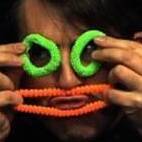



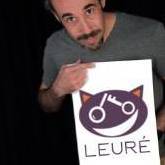
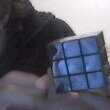



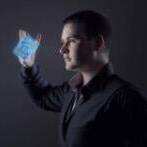

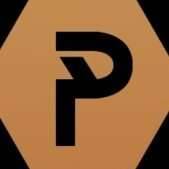







(1).gif.65cf9433710b03a02e7253078af7c0c5.gif)
